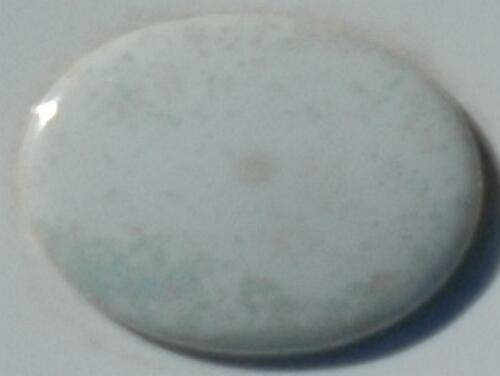
Lustre Mother of Pearl, 5gm
Lustres for Brush Application on Glass, Porcelain, Bone China, Earthenware and Tiles
Lustres are based on metallic compounds dissolved in organic solvents. After firing they form a very thin layer (less than 0.1 μm). Typical characteristics of lustres are their brilliance as well as their metallic iridescent brightness which occurs after firing on smooth substrates.
The Lustre Mother of Pearl loses its iridescent effect on matt surfaces and appears matt. Lustre Mother of Pearl are suitable for the decoration of glass, porcelain, bone china, earthenware and tiles.
Firing Range 480-630°C / 896-1166°F for glass and lead-crystal. 650-900°C / 1202-1652°F for porcelain, bone china, earthenware and tiles.
Precious Metal Content
Lustre Mother of Pearl contain less than 6 % precious metal or are precious metal free.
Properties Mechanical Resistance
The mechanical resistance of lustres does not achieve the same standard as most ceramic colours and precious metal preparations because the formed lustre film is very thin. Therefore, we recommend that customers test the decorations under their own conditions to achieve the required resistances.Storage Lustres should be stored in a cool place or at room temperature (approx. 20°C / 68°F). We recommend that the preparations should be used within 6 months.
Consumption
The material consumption depends on the layer thickness of the applied lustre. This is influenced by the viscosity, the amount of thinner added and by the application of the lustre.
Colour Deviation
Substrate, kiln atmosphere, firing conditions and temperature, and the layer thickness are decisive for a good decoration. To receive good results it is recommended that a test decoration and subsequent firing be carried out.
Processing Conditions Required For Good Results
Make sure that the surface of the object to be decorated is clean and dry. Dust, fingerprints and water condensation can affect the decoration during the firing process. Take care that the objects to be decorated are not taken from a cold store into a warm workshop. A fine condensation film may occur which is not visible to the naked eye. This results in faults (eg. pinholes) in the fired lustre decoration! Allow enough time for the material to adjust to the temperature of the workshop.
Application Information
Brush Application
For the application of lustres we recommend fine Casan or squirrel hair brushes. The lustre should not be brushed smooth, it should be left to “spread“ on the object to be decorated. Only then will the lustre achieve a very smooth and bright appearance after firing.
Drying
The drying time depends on the surrounding atmosphere and the layer thickness of the lustre. Decorated objects should be protected from dust before firing. In general, it is recommended to fire the objects as soon as possible after they have dried.
Miscibility
Lustres can be mixed with each other. However, unpredictable colour changes may occur, especially if lustres containing precious metals are mixed with lustres free of precious metals. We do not recommend mixing orange lustres with brown lustres, as this results in dirty colour shades.
Firing
During the first heating phase the organic components of the preparation burn off. This process is completed at approx. 400°C (750°F). The lustre film is formed. A constant, slow temperature increase, enough oxygen and sufficient ventilation are decisive for the quality of the fired lustre decoration. The firing profile considerably influences the mechanical and chemical properties of the fired decoration. Furthermore, the colour is strongly dependent on the temperature and the firing conditions. The rate of cooling has no major influence on the quality of the lustre decoration, unlike the firing temperature and soak time. However, the firing process should not be stopped too abruptly after the soak time. Cooling down the decorated article too quickly can cause cracks in the glaze.
Your cart is empty
Continue shopping